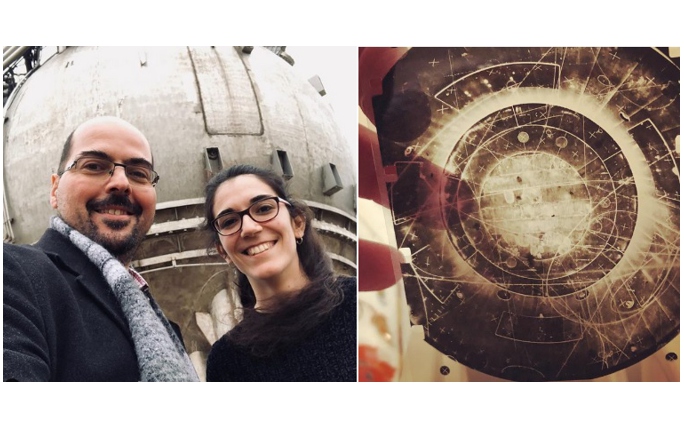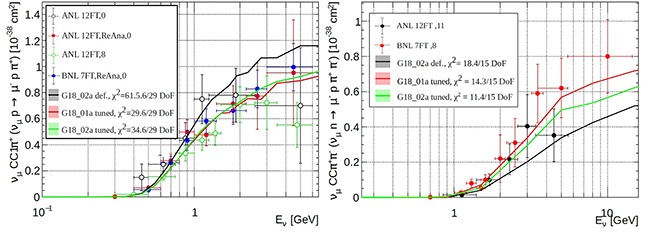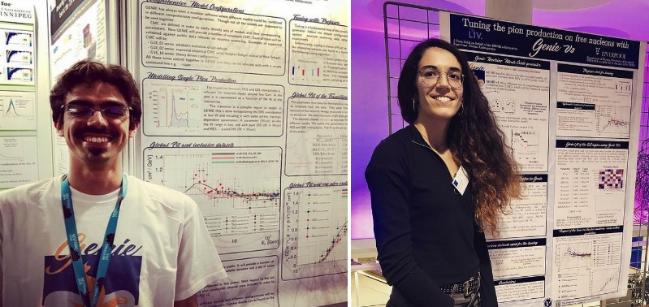Neutrino-Nucleon Cross-Section Model Tuning in GENIE v3

The GENIE Neutrino Monte Carlo generator is the world’s most commonly-used simulation of neutrino interaction physics and it is employed by nearly all current and near-future accelerator-based neutrino experiments. The University of Liverpool is highly involved in the development of GENIE, with the involvement of Prof. Costas Andreopoulos, Dr Marco Roda, Dr Christopher Barry, and PhD students Júlia Tena Vidal and Rhiannon Jones.
Júlia Tena Vidal joined the Liverpool team in 2017 as a PhD student in the LIV.DAT CDT, supervised by Costas Andreopoulos and guided by Marco Roda. An important part of her work is to improve the agreement of GENIE at the free nucleon level with pion production data. For this purpose, Júlia tuned the shallow inelastic scattering (SIS) region in GENIE against inclusive and pion production data on deuterium from the ANL 12 ft, BNL 7ft, BEBC and FNAL 15ft bubble chamber experiments. This data, obtained in the 70’s and 80’s, is the only data available to tune pion production models at the free nucleon level. For reference, Figure 1 shows the FNAL 15ft bubble chamber as well as a real image taken by the BEBC bubble chamber.
The new tune describes both inclusive and exclusive cross sections simultaneously, improving the agreement for single-pion and double-pion cross sections on free nucleon (red and green lines in Figure 2). Even though other collaborations aimed to improve the agreement with single pion production mechanisms before, this tune is the first GENIE tune on free nucleon that offers an improved agreement with double-pion production mechanisms as well. Preliminary versions of this tune are already available for the neutrino community, and some neutrino collaborations, such as MicroBooNE, already implement the free nucleon tune for their analysis.

Figure 2: Comparison of GENIE predictions against single-pion production data (left) and comparison of GENIE predictions against double-pion production data (right)
A new improved version of the tune is described in the paper “Neutrino-Nucleon Cross-Section Model Tuning in GENIE v3” which is now available via ArXiV. This work was previously presented at several conferences, such as at Neutrino18 by Marco and at PhyStat, the NuStec Workshop and NuINT18 by Júlia.

Figure 3: Marco (left) and Júlia (right) presenting the GENIE free nucleon tune, respectively at Neutrino18 and at PhyStat.
Further information:
J. Tena Vidal, C. Andreopoulos, et al. (GENIE Collaboration), Neutrino-Nucleon Cross-Section Model Tuning in GENIE v3, High Energy Physics – Phenomenology, April 2021
https://arxiv.org/abs/2104.09179
Feature Image - Figure 1: Professor Costas Andreopoulos and Júlia Tena Vidal who co-authored the paper, in front of the FNAL 15ft bubble chamber, (left) and the particle trajectories on the BEBC bubble chamber film roll (right).